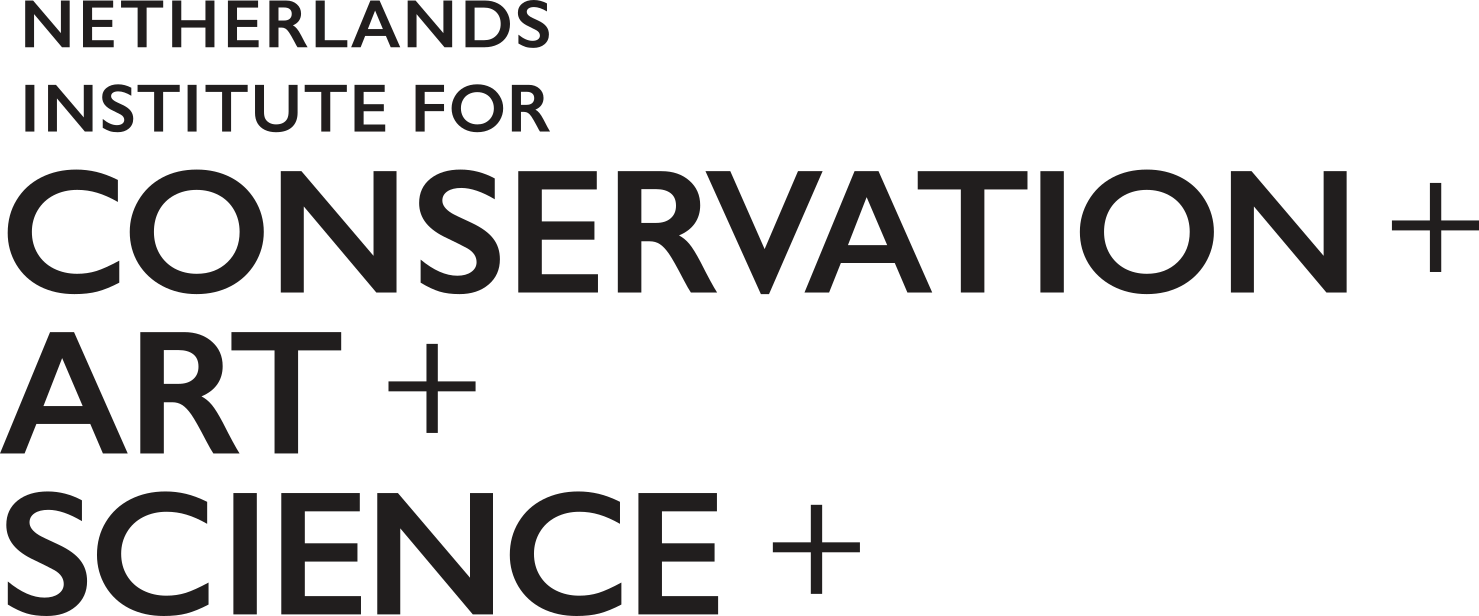Media
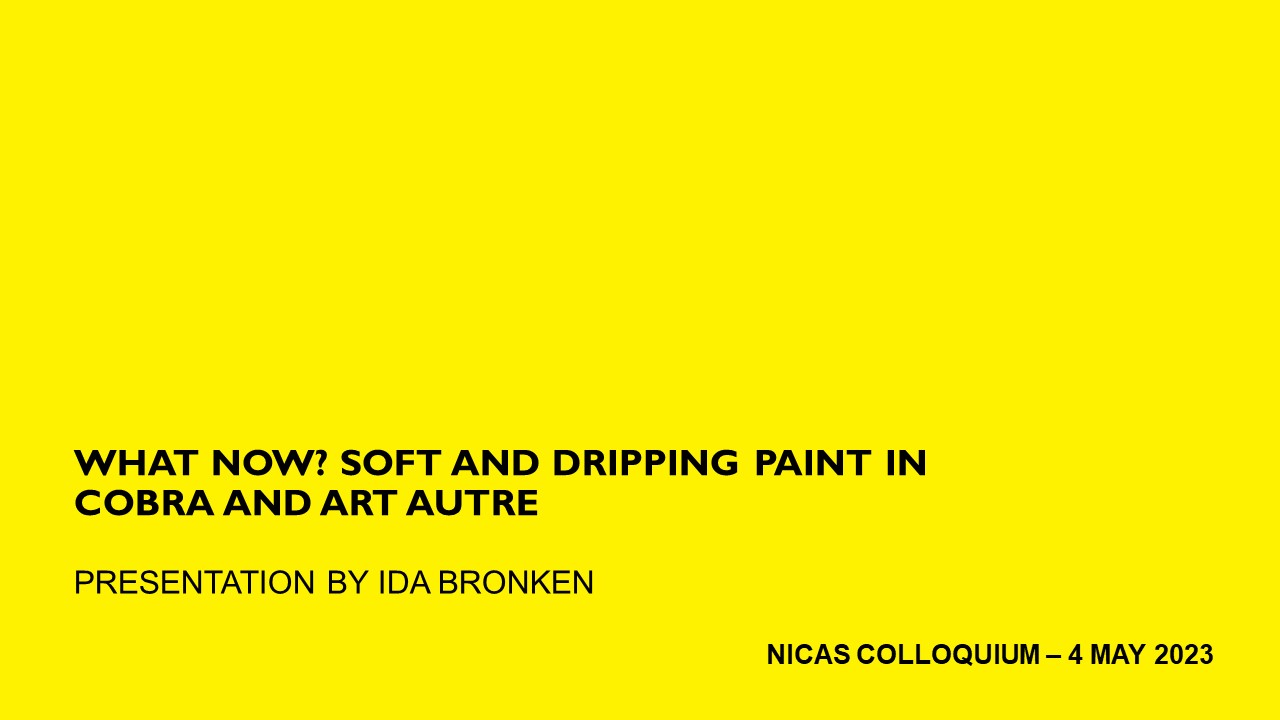
NICAS COLLOQUIUM
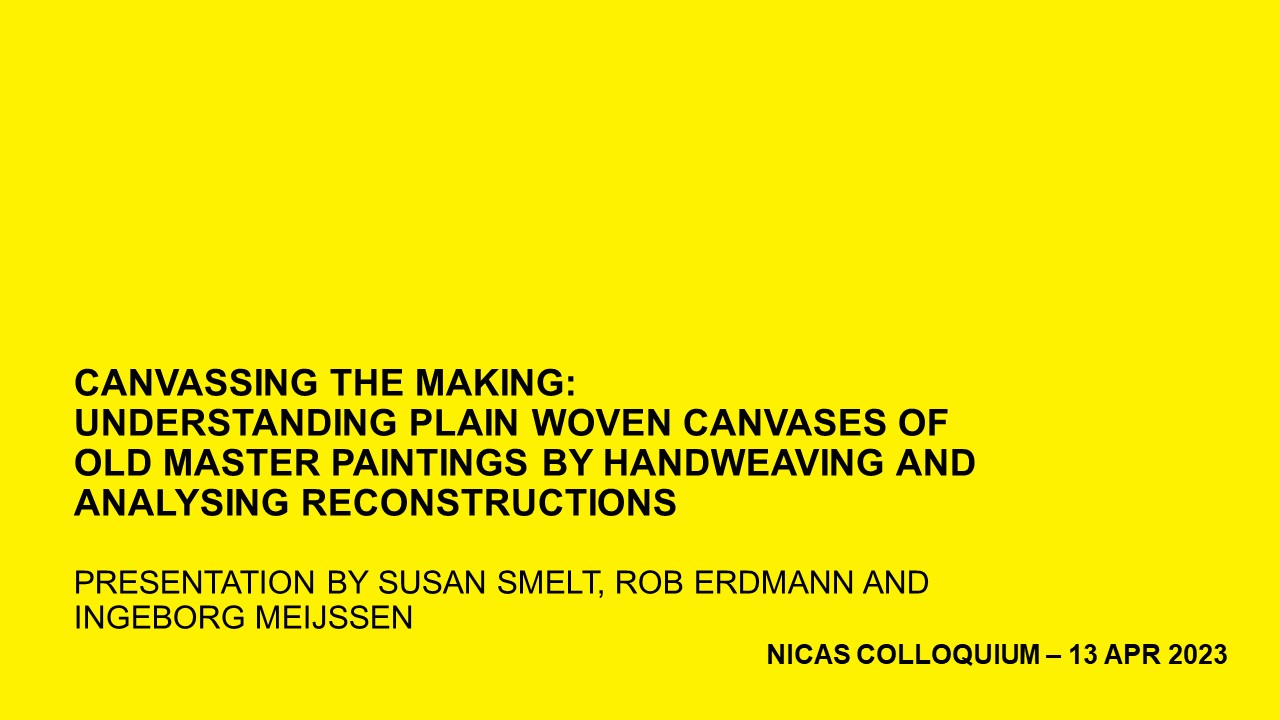
NICAS COLLOQUIUM
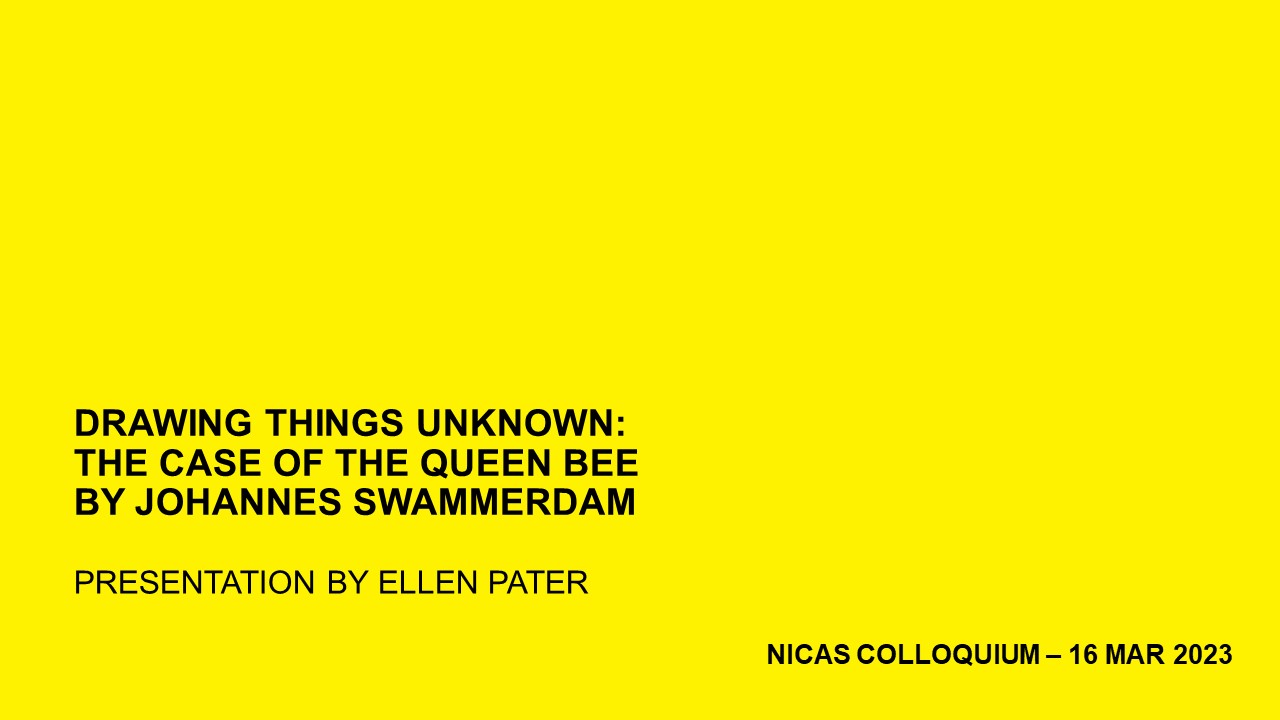
NICAS COLLOQUIUM
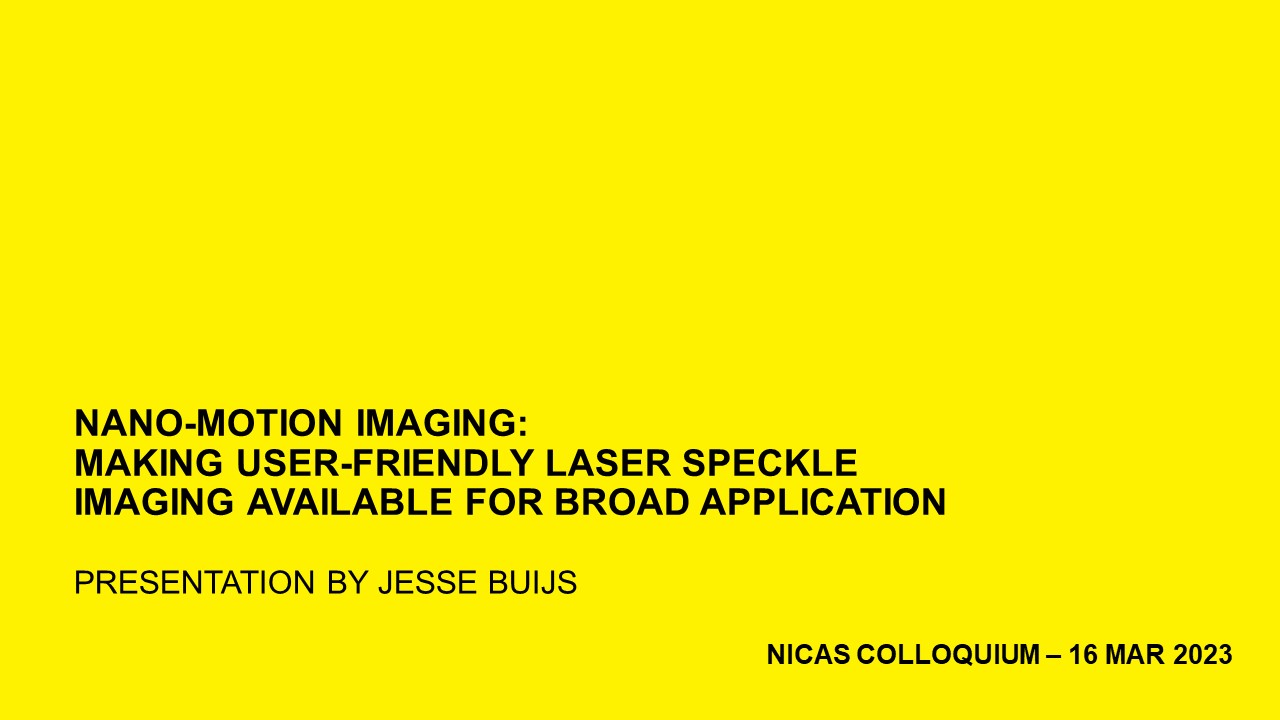
NICAS COLLOQUIUM
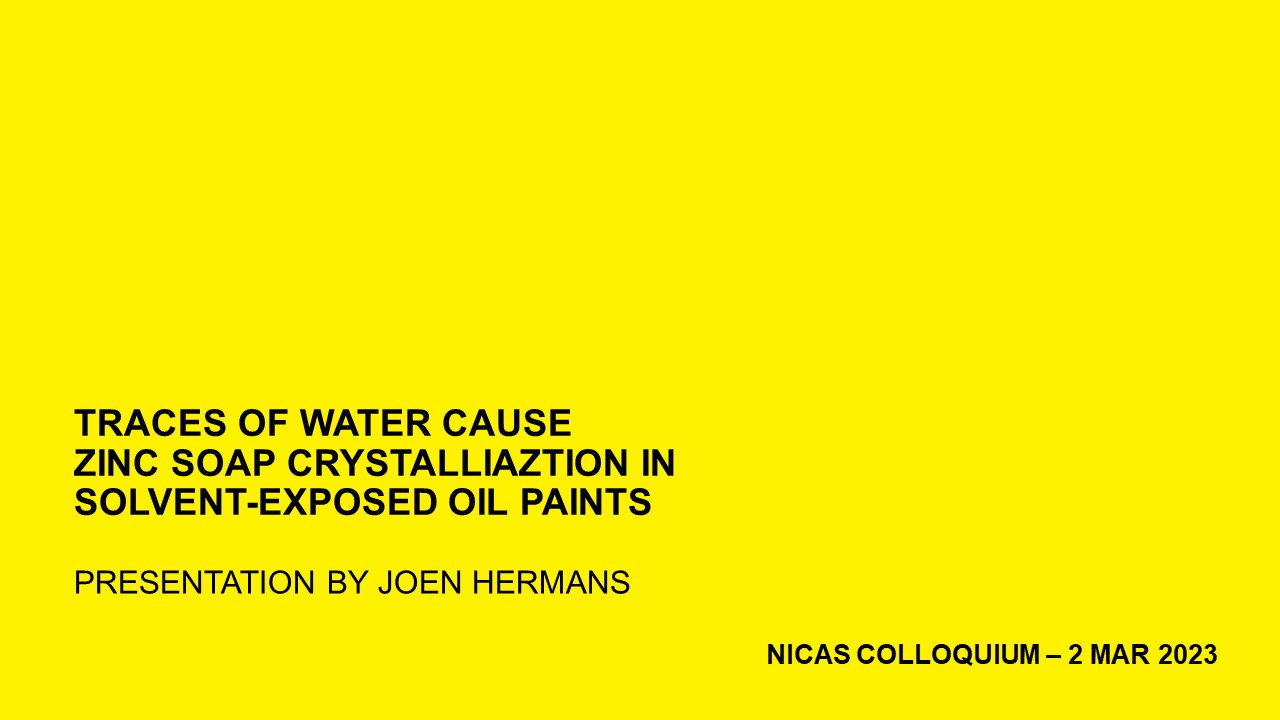
NICAS COLLOQUIUM
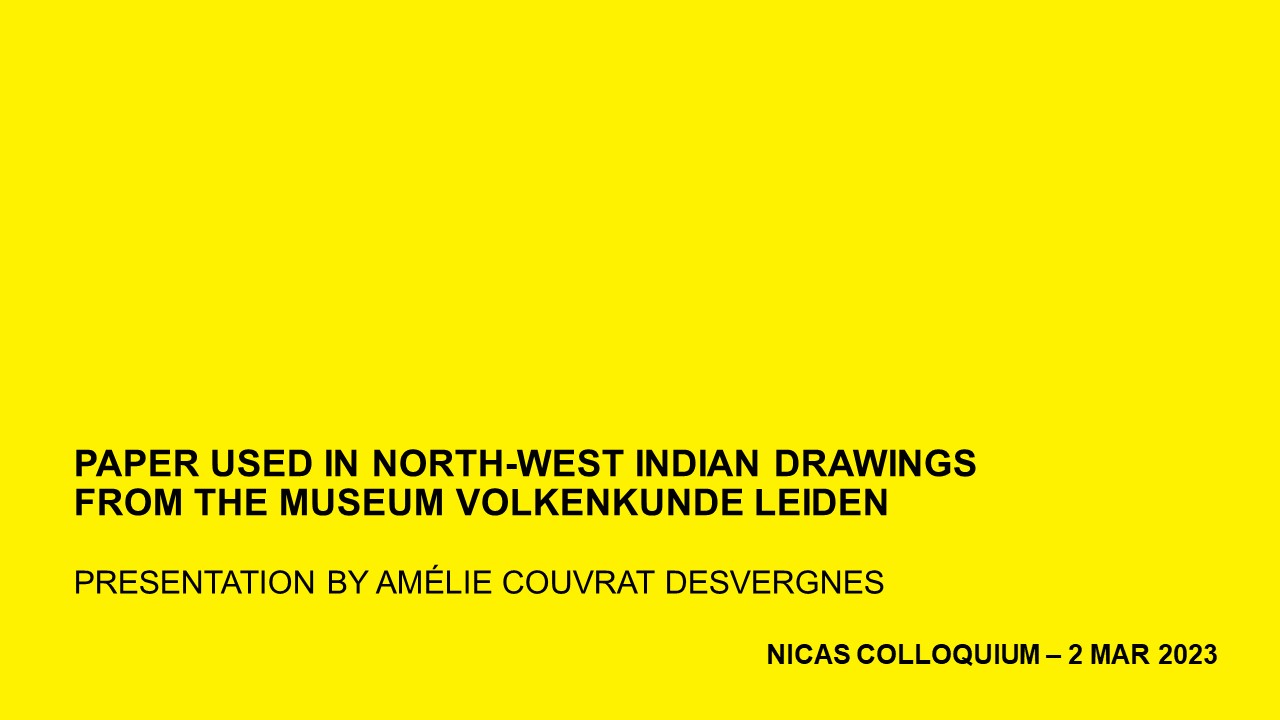
NICAS COLLOQUIUM
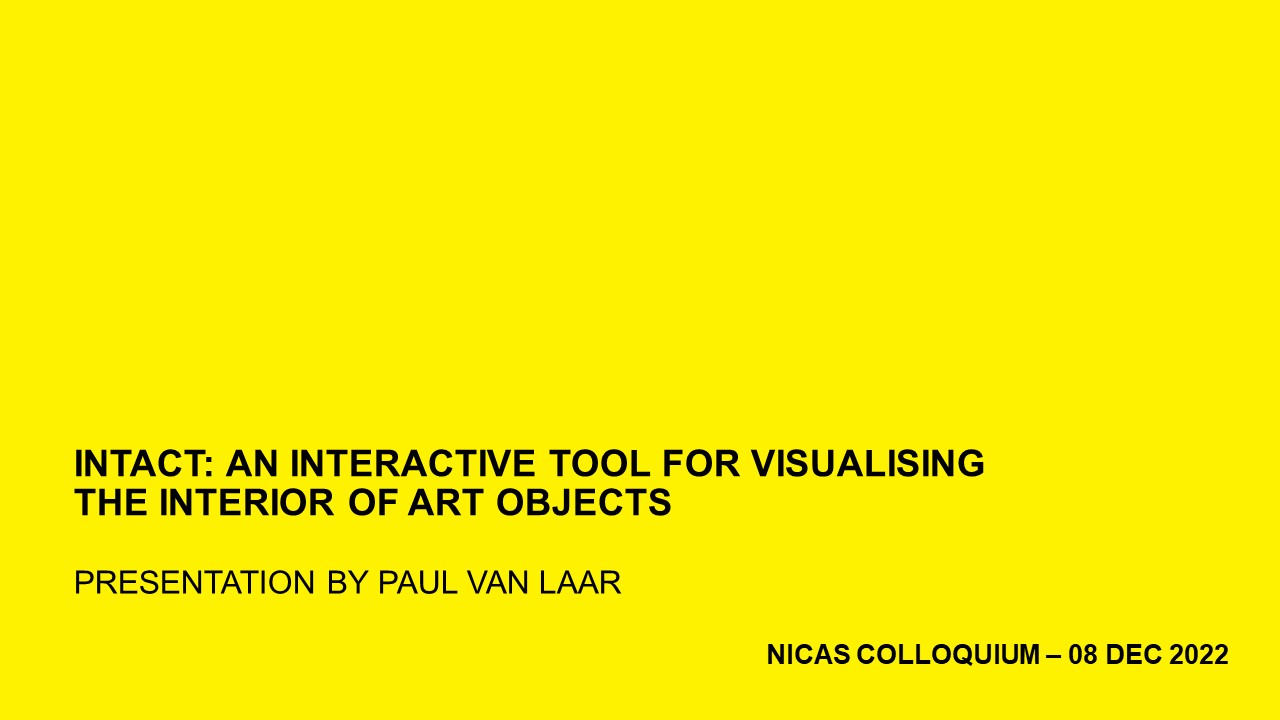
NICAS COLLOQUIUM
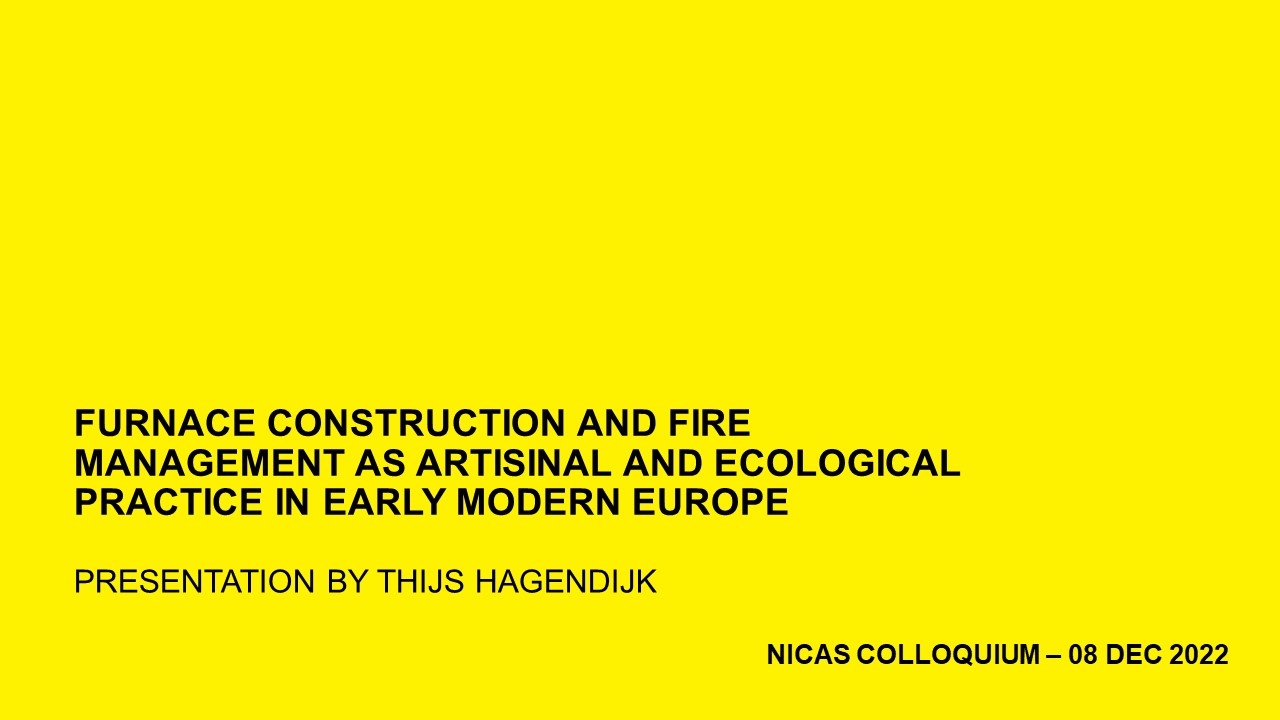
NICAS COLLOQUIUM
-
NICAS COLLOQUIUM
Ida Bronken - What now? Soft and dripping paint in Cobra and Art autre Abstract: The thesis: French Connections: Soft and dripping paint in Cobra and Art Autre (1949-1972), was defended at the UVA in 2022. A central aspect to the thesis is to document the material practises of artists associated with Cobra and Art Autre and condition issues associated with soft paint. Soft paint is for this purpose defined as a layer that reacts by deforming in response to light-to-moderate pressure applied in standard museum climatic conditions. The talk will include the visual and physical tell-tale signs associated with soft paint. The main findings from a comparative and contrasting qualitative analysis of the contextual material on artist studios, materials and biographies will be presented. Furthermore, extensive analysis was conducted on samples typical with a set of condition categories. These results strongly indicated that the condition categories do have a stronger association with particular chemical fingerprints. Bio: Ida Antonia Tank Bronken is a senior paintings conservator at the National Museum of Norway. Before graduating in conservation of art in 2002 at the University of Oslo she studied art history, history of ideas and art. She currently focuses on the conservation and study of 20th century art, but has experience from travelling exhibitions, medieval, folk art and cultural heritage collections. In 2022 Bronken defended the PhD thesis French Connections: Soft and dripping paint in Cobra and Art Autre 1949-1972 at the University of Amsterdam with Klaas Jan van den Berg (RCE and UVA) and Ella Hendriks (UVA) as promotors. A revised version of the thesis is due for publication in 2023 with Archetype publications. -
NICAS COLLOQUIUM
This NICAS small project will provide knowledge and insight into the structure of the plain woven canvas of old master paintings. This will be achieved by connecting the structure of the canvas to the making of the canvas. The structure of the plain woven canvas is analysed by using highly advanced computational analysis, newly developed at the Rijksmuseum. The structure of canvas is, among other things, influenced by the way it was manufactured. This will be examined by handweaving linen canvas and executing a set of experiments in an effort to reconstruct the structure of handwoven canvas of old master paintings. These experiments will subsequently be analysed in the same way as the plain woven canvas of old master paintings. A comparison of these two sets of analysis will provide unique knowledge and insight into both the composition and the making of plain woven canvas of old master paintings. -
NICAS COLLOQUIUM
Ellen Pater is a PhD student at the NWO project Visualizing the Unknown, and the Huygens institute and Leiden University. Previously she completed her Research Master at University Groningen and her Bachelor at Minerva Art Academy in Groningen. Seventeenth-century drawings made with the microscope are easily taken for granted. Especially the artistic knowledge involved in their production. In my research project I am looking to uncover the artistic processes and materials involved in making images of the microworld: from preparation to drawing to print. To do this, I draw with seventeenth century microscopes during MicroLabs at Rijksmuseum Boerhaave and also produce early modern artistic materials based on recipes by o.a. Willem Goeree (1635-1711) and Samuel van Hoogstraten (1627-1678). In this presentation, I will take a closer look at a drawing of the uterus of the queen bee that was made by Johannes Swammerdam (1637-1680), to show how such drawings may have come to to be, and why it is important to consider the role of artistic knowledge to gain a deeper understanding of such representations. -
NICAS COLLOQUIUM
Jesse Buijs is a postdoctoral researcher at Wageningen University and an expert in Laser Speckle Imaging (LSI). In 2022, he earned his PhD from the same university, during which he developed an algorithm to perform real-time LSI analysis. In collaboration with the Rijksmuseum, he adapted LSI to measure solvent presence in oil paints during varnish removal from oil paint. Currently he is working as a postdoc on making the method broadly applicable and user-friendly and is exploring the potential of commercializing the technology by means of a spin-off company. Imaging inside non-transparent materials is often challenging and requires complex equipment. Laser Speckle Imaging (LSI) visualizes nanoscopic motions inside such materials and gives a unique insight in dynamical processes such as solvent activity, drying, melting, crystallization, cracking. LSI can be performed with a simple machine, but relies on advanced data processing algorithms to visualize the results. This presentations main focus will be on our current effort in adapting the technique to make it accessible for conservators and heritage science, by automating these data processing tasks. I will also show the results of LSI experiments on varnish removal from oil paints, cracking in metal objects, and salt crystallization in porous materials. Our findings show that there are many possible applications where LSI can be used for monitoring objects, fine-tune conservation efforts, or gain a deeper understanding of the fundamental processes underlying dynamical materials. -
NICAS COLLOQUIUM
Joen Hermans is Assistant Professor Conservation Science in a joint position between the Conservation & Restoration program and Van ‘t Hoff Institute for Molecular Sciences, both at the University of Amsterdam. Since 2017, he holds an additional position as researcher at the Conservation & Science department of the Rijksmuseum. He obtained his PhD on metal soap formation in oil paint under supervision of Piet Iedema and Katrien Keune at the University of Amsterdam in 2017. Between 2018-2022, he worked on a NWO/Veni project studying the influence of water on oil paint chemistry. A central question in paintings conservation is the influence of solvent exposure on detrimental chemical reactions in paint. Using infrared spectroscopy and a polymer model system that contains metastable amorphous zinc soaps, we could show that, while solvent swelling alone has no effect, water does induce zinc soap crystallization. In particular fast-diffusing polar organic solvents with water impurities are able to induce extensive crystallization, delivering high concentrations of water quickly deep into paint layers. Crucially, experiments with the model system and with real oil paint samples show that, even at very short solvent exposure times, significant quantities of crystalline zinc soaps are formed. This strong effect of water impurities in common solvents gives reason to be cautious when conservation treatments are being considered for oil paints that contain zinc white or other water-sensitive chemicals. -
NICAS COLLOQUIUM
Amélie is a freelance paper and book conservator based in the Netherlands. She specialises in Islamic and South Asian manuscripts and works on paper. She has worked in several institutions such as the Rijksmuseum, the Museum of Islamic Art in Qatar, and the musée du Quai Branly in Paris. In addition, she has carried out several projects on the materials and techniques of Islamic and South Asian manuscripts. She is currently conducting a conservation and research project on the Pahari drawings and miniature paintings in the Museum Volkenkunde in Leiden. The Museum Volkenkunde has 134 drawings and paintings on paper from the Punjab hills (north-western India) commonly known as “Pahari miniature paintings”. The collection covers a wide variety of themes (Hindu stories, vernacular poetry, portraits of rulers and historical figures) and echoes the interactions between local traditions, Mughal culture as well as western influences. The project, which began in 2020, has several interconnected strands, but the focus has been on studying the materials and techniques used by Pahari artists, particularly the so-called Sialkoti paper. To this end, an examination protocol was developed and fibre analyses were carried out to characterise the paper and thus gain a better understanding of papermaking in this region. The results will be used to build a database of paper fibres used in Asia. -
NICAS COLLOQUIUM
Paul van Laar is a PhD fellow at Research Unit VICARTE (Glass and Ceramics for the Arts) and the department of conservation and restoration at FCT NOVA, Lisbon. Investigations into cultural heritage objects are most often focused on external features. While this is not surprising, simply due to ease of access, the interior often holds as many secrets at least! From traces of toolmarks that inform us about studio practice and making processes, to tree rings that allow for dating and attributing objects: unveiling an artwork’s internal structure may help uncover a myriad of aspects of an artwork previously hidden from the eye. The NICAS-funded IntACT project set out to create a visualisation tool that combines 3D surface scans with CT scans, to allow for an intuitive exploration of interior features of an object for any cultural heritage professional. -
NICAS COLLOQUIUM
Thijs Hagendijk is a lecturer in technical art history at Utrecht University. Constructing furnaces and managing fire demanded serious skill and knowledge. While the importance of the historical 'art of fire' is recognized in material culture studies, I am starting a project that specifically traces how artisanal pyrotechnics developed in response to the changing relation between humans and their environment, including the early energy transition towards fossil fuels, concerns over wood shortages and air pollution in Early Modern Europe. I am looking to combine historical research with the interdisciplinary and collaborative reconstruction and re-operation of historical furnaces to analyze how the interplay between environment, pyrotechnology and artisanal demands shaped the quality, condition, and material composition of historical artefacts.
